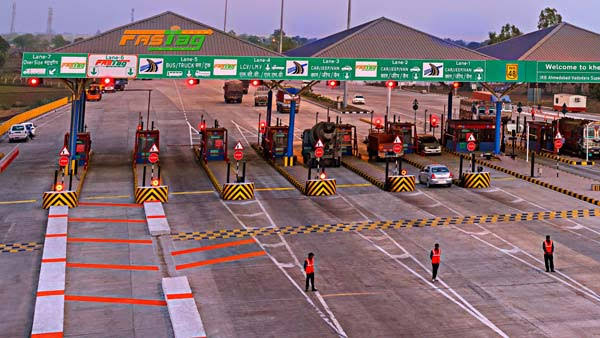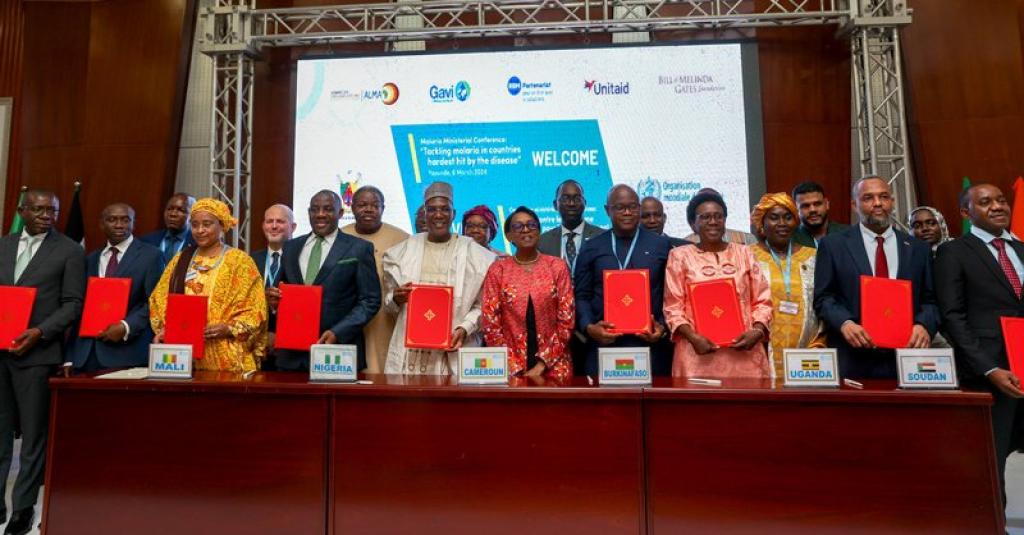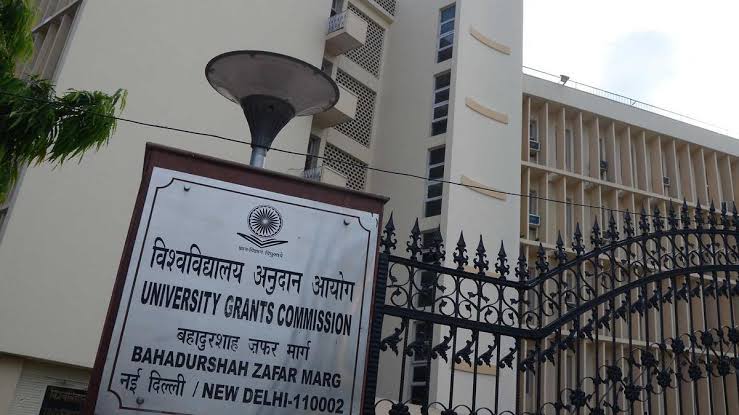MNRE to discuss specialized cylinders for hydrogen storage with stakeholders

- 11 Mar 2024
Why is it in the News?
The Ministry of New and Renewable Energy (MNRE) plans to convene a meeting with relevant stakeholders to discuss the development of specialized cylinders for green hydrogen storage.
What is Green Hydrogen?
- Green Hydrogen is produced through the process of electrolysis of water, utilizing electricity generated from renewable energy sources.
- The carbon intensity of green hydrogen depends on the carbon neutrality of the electricity source, with higher renewable energy content resulting in greener hydrogen.
- With its potential to decarbonize various sectors, reduce carbon emissions, and achieve energy independence, green hydrogen holds significant promise.
- Its production from renewable sources like solar, wind, and hydropower makes it a sustainable and environmentally friendly alternative to traditional fossil fuels in transportation and industry, offering a consistent and reliable energy source.
- Storage: Hydrogen is stored in cylinders at high pressure, categorized into four types based on materials used. Type 1 and Type 2 are suited for storage, while Type 3 is ideal for storage and transportation, and Type 4 is recommended for on-board storage.
- Unlike compressed natural gas (CNG) stored at around 3,600 psi, hydrogen is stored at 5,000-10,000 psi.
- Vehicles can utilize hydrogen either by burning it in an internal combustion engine or by using a fuel cell to convert it into electricity to charge on-board batteries.
- Type 3 and Type 4 cylinders are reinforced with carbon fiber, making them lightweight and suitable for vehicles.
- Type 4 cylinders, lined with a polymer instead of aluminum like Type 3, are even lighter.
Application of Green Hydrogen:
- Green hydrogen finds diverse applications, including powering vehicles and generating electricity through fuel cells.
- It also serves in heating systems and the production of chemicals and fertilizers.
- Additionally, green hydrogen supports microgrids, facilitating electricity provision to remote areas and fostering energy independence.
Advantages and disadvantages of green hydrogen:
- 100 % sustainable: Green hydrogen does not emit polluting gasses either during combustion or during production.
- Storable: Hydrogen is easy to store, which allows it to be used subsequently for other purposes and at times other than immediately after its production.
- Versatile: Green hydrogen can be transformed into electricity or synthetic gas and used for commercial, industrial or mobility purposes.
However, green hydrogen also has negative aspects that should be borne in mind:
- High cost: Energy from renewable sources, which are key to generating green hydrogen through electrolysis, is more expensive to generate, which in turn makes hydrogen more expensive to obtain.
- High energy consumption: The production of hydrogen in general and green hydrogen in particular requires more energy than other fuels.
- Safety issues: Hydrogen is a highly volatile and flammable element and extensive safety measures are therefore required to prevent leakage and explosions.
NHAI to start rolling out satellite-based tolling on national highways soon

- 11 Mar 2024
Why is it in the News?
Road Transport and Highways Minister Nitin Gadkari said in Parliament in February that the government plans to implement a new highway toll collection system based on the global navigation satellite system before the model code of conduct for the 2024 election kicks in.
What is the Global Navigation Satellite System (GNSS)?
- GNSS refers to a constellation of satellites providing signals from space that transmit positioning and timing data to GNSS receivers.
- The receivers then use this data to determine location.
- Examples of GNSS include Europe’s Galileo, the USA’s GPS, Russia’s GLONASS and China’s BeiDou
How will the GNSS-Based Toll System work?
- The system will use an automatic number plate recognition (ANPR) system through cameras installed on highways and deduct tolls based on the distance traveled by a vehicle.
- The device monitors the movements while driving, accurately marking the entry and exit points on tolled segments. By analyzing travel distance, it computes the charges accordingly.
- This eliminates the uniformity of fixed tolls at booths, ensuring fairness for drivers traversing shorter distances.
Difference between FASTags and ANPR technology:
- FASTags streamline electronic toll payments at toll plazas equipped with scanners, enabling vehicles to pass through without stopping.
- Conversely, GNSS-based systems utilize ANPR technology to deduct tolls based on distance traveled, rendering traditional toll plazas unnecessary.
What are the Challenges?
- Detection of Non-Compliance: Without physical barriers, detecting non-compliant vehicles, such as those without an On-Board Unit (OBU) or engaging in fraudulent activities, poses a challenge.
- Infrastructure Requirements: Deploying gantry-mounted Automatic Number-Plate Recognition (ANPR) systems along highways is essential for capturing violations and enforcing toll payments.
- License Plate Quality: The effectiveness of ANPR systems relies on the quality of license plates; subpar plates hinder accurate recognition and enforcement efforts.
- Data Privacy and Security: GNSS-based toll systems entail collecting and processing sensitive location data, necessitating robust privacy and security measures.
Inflection AI rolls out new large language model to its Pi chatbot

- 11 Mar 2024
Why is it in the News?
Recently, Inflection AI launched its latest LLM, Inflection 2.5, an upgrade to its model that powers its friendly chatbot Pi personal assistant.
About Inflection 2.5:
- Inflection-2.5 is an “upgraded in-house model that is competitive with all the world’s leading LLMs like GPT-4 and Gemini.
- The newly upgraded LLM comes with its signature personality and uniquely empathetic fine-tuning.
- Its latest model achieved GPT-4’s performance with only 40 per cent of the OpenAI model’s computation power for training.
- Besides, it seems Inflection 2.5 has made some stellar strides in areas of IQ such as coding and mathematics.
- This means that the model has made substantial improvements on key benchmarks.
- With the new upgrade, Pi has now been endowed with world-class real-time web search capabilities to ensure that users get access to high-quality and up-to-date information in real-time.
What is the Pi chatbot?
- Pi is an advanced chatbot powered by Inflection AI's cutting-edge language model, Inflection 2.5 which allows one to have deep and meaningful conversations.
- To access the chatbot, one needs to log on to Inflection.AI, click on Meet Pi, and simply start talking to the chatbot right away.
- Pi is more humane and has been promoted as a chatbot that has a personality.
- In other words, Inflection AI dubbed it as a chatbot that is “supportive, smart, and there for you anytime”.
- Pi is more like a companion to humans and is free to use.
- The chatbot comes with a voice, in six distinct voices, to choose from adding life to conversations.
Pi chatbot boasts a number of impressive features that make it stand out from other conversational AI systems:
- Real-time web search capabilities: Pi can access and present up-to-date information on a wide range of topics, ensuring that users always have access to accurate and relevant information.
- Empathetic personality: Pi's unique empathetic fine-tuning allows it to understand and respond to the emotional nuances of human communication, making it a more engaging and personable conversational partner.
- Versatile conversation topics: Whether you're discussing current events, asking for local recommendations, studying for an exam, drafting a business plan, coding, or just talking about hobbies, Pi is equipped to handle a wide range of conversational topics.
- User-friendly interface: Designed with accessibility in mind, Pi's intuitive interface makes it easy for users of all technical abilities to engage with the chatbot and get the most out of their conversations.
Health ministers of 11 African countries commit to end malaria deaths

- 11 Mar 2024
Why is it in the News?
In a historic gathering in Cameroon’s capital Yaoundé, African health ministers, global malaria partners, funding agencies, scientists, civil society organizations and other principal malaria stakeholders pledged to end malaria deaths, especially given the tools and systems available.
What is the Yaounde Declaration?
- The Yaounde Declaration was endorsed by health ministers from 11 African nations with the highest malaria burden, aiming to expedite efforts to eliminate malaria-related deaths.
- Signed during the Yaoundé conference, co-hosted by the World Health Organization (WHO) and the Government of Cameroon, the declaration underscores a collective commitment to combat malaria.
- The signatory countries include Burkina Faso, Cameroon, the Democratic Republic of the Congo, Ghana, Mali, Mozambique, Niger, Nigeria, Sudan, Uganda, and Tanzania, together accounting for approximately 70% of the global malaria burden.
- Commitments entail stronger leadership and increased domestic funding for malaria control programs, leveraging data technology, adhering to updated technical guidance, and intensifying efforts at national and sub-national levels.
- Ministers pledged augmented health sector investments to fortify infrastructure, personnel, and program implementation, fostering multi-sectoral collaboration, and cultivating partnerships for funding, research, and innovation.
- Signatories affirmed their resolute dedication to hasten malaria mortality reduction and to ensure mutual accountability for the declaration's outlined commitments.
Current Status of Malaria:
- Between 2019 and 2022, global malaria cases increased from 233 million to 249 million, with Africa experiencing a substantial rise from 218 million to 233 million cases, highlighting the continent as the epicenter of the malaria crisis.
- The 11 African countries represented at the conference bear the highest burden of malaria infections and deaths.
Progress and Challenges:
- Despite some progress, malaria incidence has only declined by 7.6% and mortality by 11.3%, falling short of the African Union’s interim goals.
- Only seven out of 46 member states have achieved a 40% reduction in malaria incidence or mortality.
- Urgent action is imperative to bridge a financial gap of $1.5 billion to sustain basic malaria services, especially for vector control.
- Additional funding of $5.2 billion annually for progress towards elimination and $11 billion for climate adaptation in the health sector is crucial to avert significant surges in cases and deaths, particularly among vulnerable populations like children and pregnant women.
UGC notifies framework for private universities to set up off-campus centers

- 11 Mar 2024
Why is it in the News?
In line with the “future academic vision” instead of “commercial interests”, the UGC has notified modalities on March 6 for state private universities to set up off campus centers within their respective states.
News Summary:
- The University Grants Commission (UGC) recently permitted private universities to establish off-campus centers and outlined regulations for the same.
- Previously, private universities in the country were restricted from opening off-campus centers in other states.
- In a meeting held on March 5, the UGC decided to authorize state private universities to establish off-campus centers across the country, provided they meet specific criteria.
- Criteria include a minimum of five years of establishment and accreditation from the National Assessment and Accreditation Council (NAAC), without requiring an A or B grade.
- Universities seeking to establish off-campus centers must meet staff, infrastructure, and financial requirements mandated by the commission and obtain approvals from statutory and regulatory bodies.
- These universities must ensure the provision of infrastructure, faculty, and courses offered at the main campus to students at their off-campus centers.
- A one-time establishment fee of Rs 10 lakh is required to be paid to the UGC by the universities.
- The UGC reserves the right to conduct inspections and take punitive actions against universities in case of irregularities or complaints.
- Additionally, the UGC may order the closure of a university’s off-campus center for violations, with the university responsible for relocating affected students to the main campus.
About University Grants Commission (UGC):
- The University Grants Commission (UGC) of India operates as a statutory body established under the UGC Act, 1956.
- Its primary mandate encompasses coordinating, determining, and upholding standards within higher education institutions across India.
- UGC holds the authority to grant recognition to universities and colleges within the country and allocates funds to these recognized institutions.
- Nodal Ministry: Department of Higher Education, Ministry of Education.
Mandate of UGC:
- Facilitating and coordinating university education initiatives.
- Establishing and maintaining standards in teaching, examination, and research activities within universities.
- Formulating regulations to define minimum education standards.
- Monitoring advancements in collegiate and university education while disbursing grants to these institutions.
- Serving as a crucial intermediary between the Union and State governments and higher education institutions.
- Providing advisory services to the Central and State governments concerning measures aimed at enhancing university education standards.
Conclusion
Academic experts said that this decision may prove beneficial for students as they will get more options to choose from. However, it also means that the 16 government-run universities in the state will face more competition. More students may shift to these centers, leaving a large number of approved seats in the public universities vacant every year.
